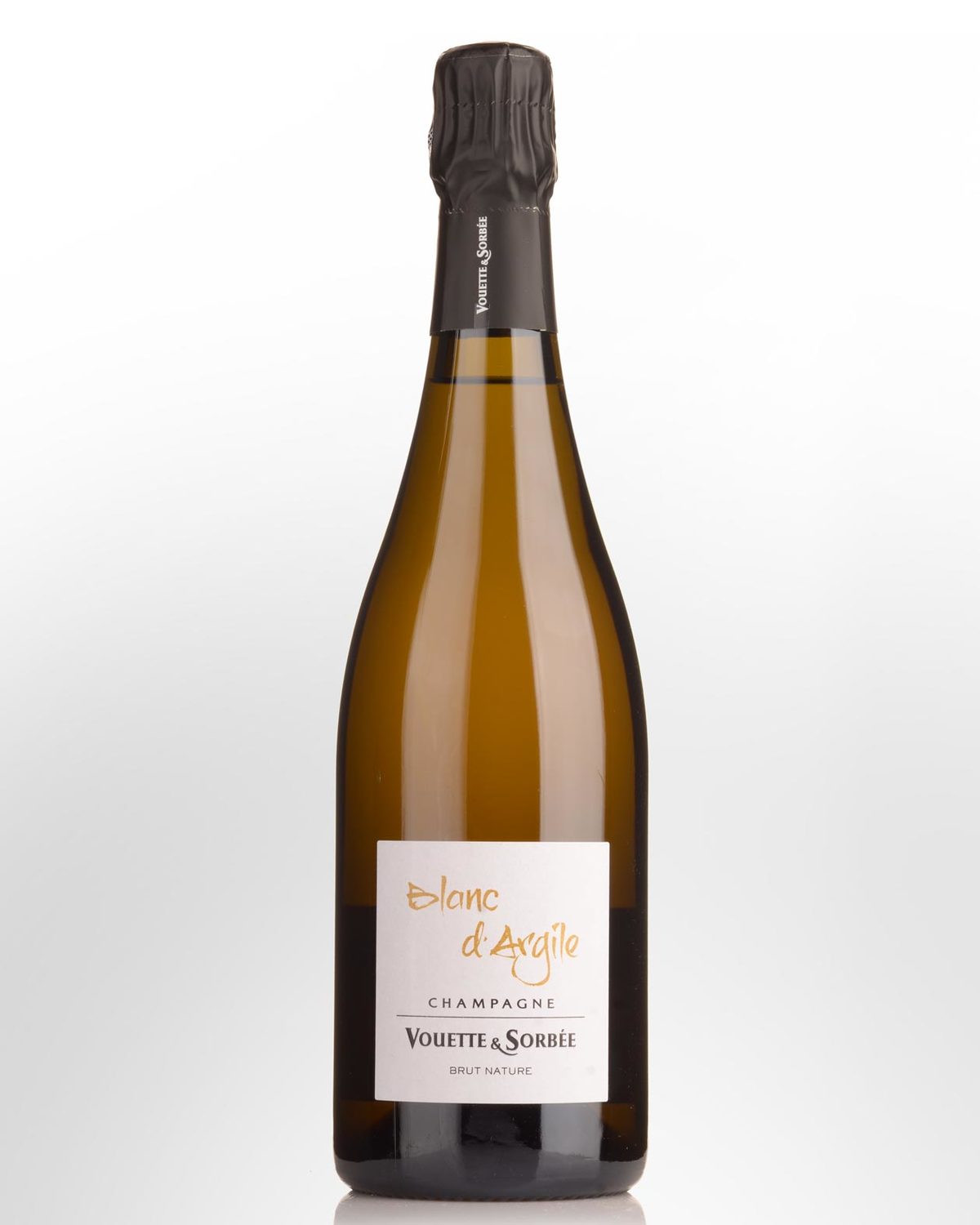
Vouette et Sorbee Blanc d'Argile (R17) Champagne
Bertrand Gautherot has been quietly working away in the hamlet of Buxières-sur-Arce, in the Aube’s Côte des Bar region of Champagne, yet his wines have not escaped the attention of the top restaurants and retailers of the world. Each year Vouette & Sorbee allocations are eagerly awaited, and these exceptionally fine wines are consistently some of the best and most unique expressions from the area.
The vineyards here lie closer to Chablis than to Épernay, both in distance and geology, with soils dominated by the same Kimmeridgian limestone for which Chablis is famed. Gautherot’s wines take their deep and powerful personalities from these soils and the (relatively) sunnier climate of the southern Aube. His wines all come from a single harvest—noted by the “R” number on the back label—with the exception of the Fidèle cuvée, which sees a small addition of 5-10% reserve wine from a perpetual blend started in 2001. His winemaking abhors any kind of manipulation in the cellar. Gautherot uses the traditional Coquard press and the juice is transferred into oak or amphorae via gravity rather than being pumped. Primary fermentations are always carried out with natural yeasts and riddling and disgorgement are all done entirely by hand. The wines are bottled without fining or filtration and without dosage. The results are some of Champagne’s most original and delicious wines: wines of distinctive personality, energy and sense of place.
Blanc d’Argile has been described as Grand Cru Chablis with bubbles—a comparison that, on this evidence, flatters many a Chablis producer. Within the cold, west-facing, Kimmeridgian limestone-rich lieu-dit of Biaunes, there is a small plot of Chardonnay that Gautherot planted wild (without preparing the soils) amongst the native vegetation. The Côte des Bar is overwhelmingly planted to Pinot Noir, but nevertheless he did this in 2000, with massale cuttings from Anselme Selosse’s vines (in Avize) and Vincent Dauvissat’s Valmur Grand Cru vineyard. This plot has become the base of what Antonio Galloni calls “one of the most beautiful and distinctive wines in Champagne.” Fermentation for this wine was wild and took place in 4-10 year old, 500 and 600 litre barrels, with a small a portion of fruit fermented and raised in Georgian amphora. As with the Fidele, this wine spent roughly 15-18 months in bottle on lees, before being disgorged by hand with zero dosage.
